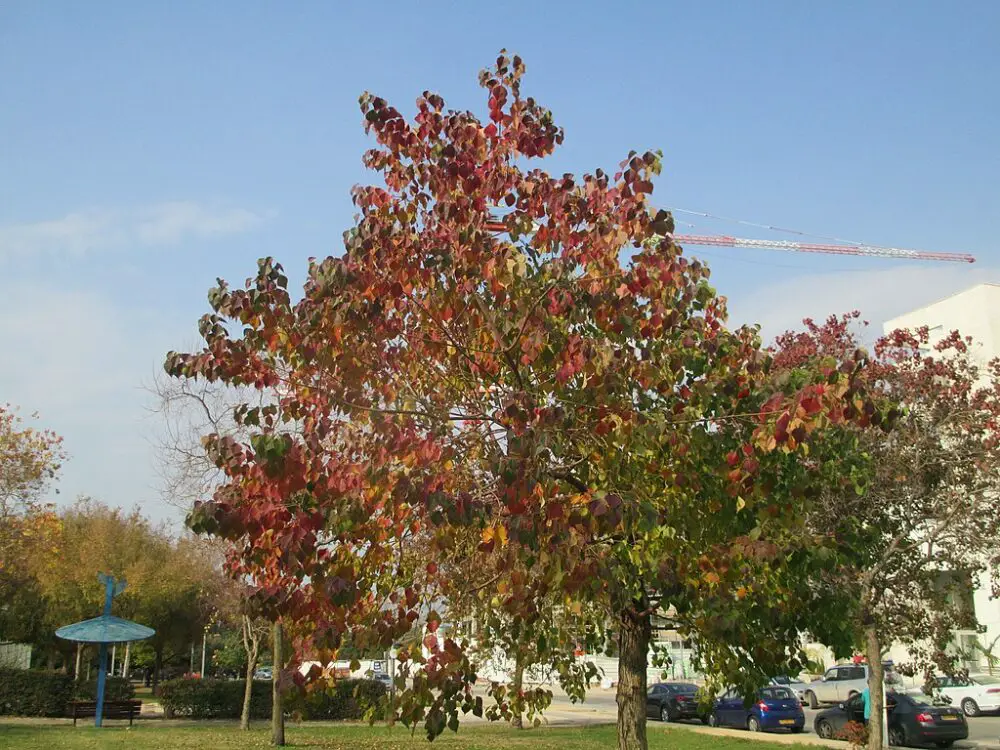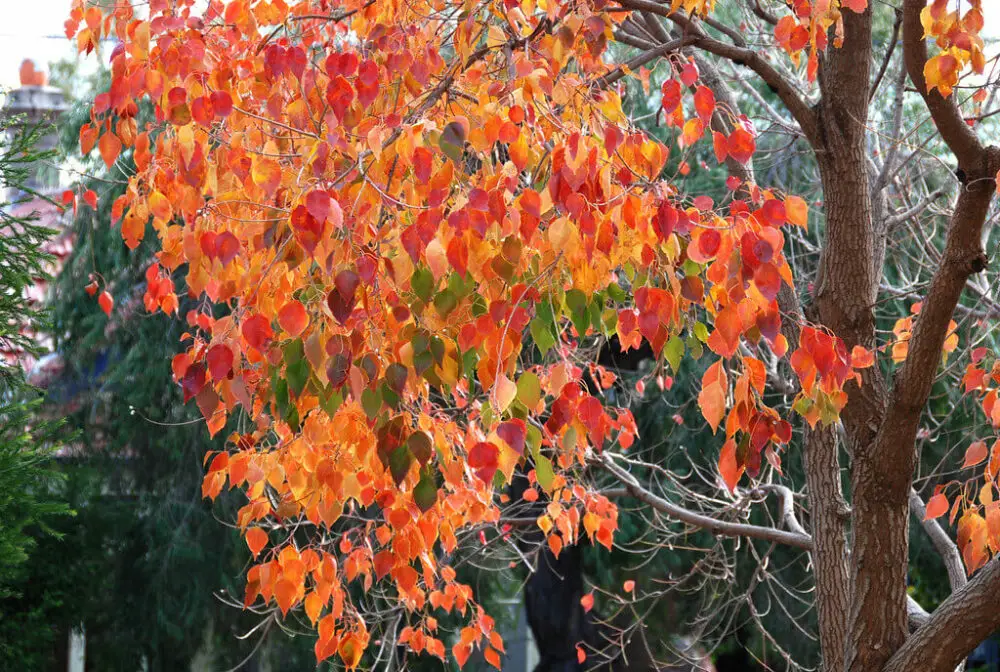Even though the mature fruit of the Chinese tallow tree (Triadica sebifera) looks like popcorn, almost no part of it is edible. This fast-growing, ornamental tree is best used to provide shade on hot days.
Popcorn Tree Plant Profile
Like most plants from the Euphorbiaceae family, Triadica sebifera is poisonous. It is toxic to humans, cattle, and the forestry surrounding it.
Before being placed in the Triadica genus, it was in the Stillingia and Sapium genera. A synonym for Triadica sebifera is Sapium sebiferum.
Nowadays, a few common names you’ll hear this tree referred to include:
What Are You Foraging For Right Now?
We're thrilled to hear your ideas. What would you like to submit today? Feel free to share your thoughts and experiences with us.
- Chinese tallow tree
- Florida aspen
- Chicken tree
- Popcorn tree
- Candleberry tree
Popcorn tree identification
The bark tends to be wrinkly with different shades of gray. You’ll find an oval-shaped canopy of branches and leaves as you move up the tree.
The deciduous leaves are ovate with a tapered point and smooth edges. They are typically bright green but have a beautiful display of fall colors for a few months out of the year.
The tree tends to flower in the spring and produces both male and female flowers. The greenish-yellow spike inflorescence has no petals and is approximately 7 inches long.
The unripened fruit is green and circular. In September and October, as the fruit matures, it dries up, turns black or brown, and splits open. When it splits open, the white seeds (popcorn) are revealed. Each fruit contains three seeds.
The tree can grow between 24 and 40 feet tall, depending on the environment. It has droopy branches and slim, waxy twigs.


Where Does the Chinese Tallow Tree Grow?
Triadica sebifera is a native species of China and Taiwan. There is a rumor that Benjamin Franklin introduced the plant to the US in the 1700s.
Some sources say he mailed seeds from Vietnam to the US. However, recent genetic testing has proven that this is most likely not true.
Either way, the popcorn tree did find its way to the US. It grows rampantly in North Carolina, South Carolina, Texas, Louisiana, Mississippi, Florida, and other southern US states.
In other parts of the world, you can find the tree in Japan, India, Costa Rica, Puerto Rico, and France.
In terms of soil, T. sebifera is not picky but prefers disturbed soil. It grows best in USDA hardiness zones eight to ten.
This tree is often seen in prairies, coastal grasslands, roadsides, ditch banks, open fields, and abandoned farms.
While it is drought tolerant, it will not grow in fully shaded areas.
Where Is Chinese Tallow Invasive?
This deciduous tree is considered an invasive species in the United States and Europe. In Texas, selling, distributing, or importing seeds is illegal. It is considered a noxious weed in South Carolina and Florida.
While some invasive plants are easily controlled, the popcorn tree is not. One tree can produce up to 100,000 seeds that are productive for up to 100 years. The seeds are carried near and far by birds and water. In Houston, Texas, 23% of trees are Chinese tallow trees.
However, an abundance of Chinese tallow trees actually harms the ecosystem. The tannins in the leaf litter are toxic to nearby vegetation.
The popcorn tree creates a monoculture and affects the diversity and resilience of local ecosystems.

How to Control the Spread of the Popcorn Tree
Most people, except beekeepers, want to stop the spread of this ferocious, resprouting tree.
Why do beekeepers like it?
His tree is very important in the world of honey production. The nectar attracts bees and yields great volumes of high-quality honey.
There are currently no biological methods of slowing down or killing a popcorn tree.
The most popular way to kill T. sebifera is to cut the tree down and apply a basal bark treatment to the cut stumps. The most common herbicide used is triclopyr.
What Is the Chinese Tallow Tree Good For?
Aside from its noxious qualities, this tree is useful in unexpected ways.
It can be used:
- To make candles and soaps. The white, waxy seed covering can be melted away to create stillingia tallow. This same white, waxy substance can also be used as lard.
- As biodiesel. After algae and palms, the popcorn tree produces the most vegetable oil in the world.
- In varnish and paint as drying oil. The stillingia oil is an important component in these products.
- To treat boils and singles. Supposedly the leaves can help heal and treat some skin conditions.
In some Asian countries, toxic parts of the tree are used medicinally. Some believe the tree can ease blood pressure and is an anti-viral and anti-carcinogenic treatment.
How Poisonous Is the Chinese Tallow Tree?
The kernel seed oil is the most poisonous part of the tree for humans. The outer coating of the seed is not.
The kernel, leaves, and sap can cause severe nausea and vomiting if ingested.
Sheep and goats can tolerate the leaves, but cattle can not.
As mentioned before, the decaying leaves are highly toxic to nearby vegetation.
Is Any Part of the Popcorn Tree Edible?
The waxy outer coating of the seed can be melted away and consumed. It can be used as a substitute for lard or cocoa butter.
However, the commercialized processing of the seed for this purpose needs product quality and cost improvement.
Can You Cook With Chinese Tallow Wood?
Unfortunately, there is no clear answer about cooking directly over a fire made with Chinese tallow wood.
You will likely have no issues using a pot or skillet over the flames. As far as smoking meats with this wood, the answer is unclear.
On the bright side, this wood burns very well and produces a lot of heat quickly.
Originally from Florida, but with a lust for travel, Sami has found herself in many remote areas with little-to-no access to traditional medicines. Since 2014, she has been experimenting with natural remedies, eastern medicine, and foraging. She believes that the Earth provides us with everything we need to live, heal, and cure.

